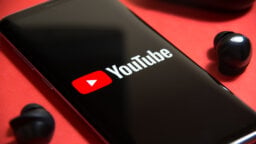What’s the biggest music streaming platform on the planet? If you guessed YouTube, you’re right. Mega right.
The platform’s Global Head of Music, Lyor Cohen, has today (November 17) confirmed via a blog post that more than 2 billion logged-in YouTube users are now playing music on the platform each month.
To put that into context, it’s more than six times the 320m Monthly Active Users (MAUs) who pressed play on a track on Spotify in Q3.
What’s more, YouTube has also revealed today: “More than 50% of logged-in viewers who consume music content in a day consume more than 10 minutes of music content (as of June 2020).”
Clearly, this suggests that said logged-in viewers are consuming more than one track via YouTube during their listening/viewing sessions.
Music rightsholders, of course, will want to see how this vastness of listening behavior matches up with the amount of ad dollars paid out to labels, artists, publishers and songwriters.
For a long time, this question has led music rightsholders to gnash their teeth over the so-called “value gap” between the amount of music consumption on YouTube and the amount of dollars paid to the music industry as a result.
YouTube has announced some positive news on that score today, with the launch of audio advertising on its platform for the first time.
Explains YouTube: “Audio ads are characterized by creatives where the audio soundtrack plays the starring role in delivering your message. The visual component is typically a still image or simple animation.”
Audio ads are never going to become the majority of business on YouTube: the platform has further confirmed today that 85% of music listening on its platform takes place in the “foreground” of users’ devices, suggesting that just 15% of music listening occurs when the user isn’t watching a video.
For a platform that generated over $5bn from total advertising in Q3, however, it’s a significant launch for YouTube, and its music business partners.
In addition, YouTube is launching “dynamic music lineups”, which give advertisers the opportunity to target audiences based on a “dedicated groups of music-focused channels across popular genres such as Latin music, K-pop, hip-hop and Top 100, as well as moods or interests like fitness”.
Speaking to MBW this week, Cohen joked: “I understand that tension makes for good music business headlines, but this is a positive news story for everybody.”
He opined that for a long time the record label world had been “drunk on subscription” due to it being a “very successful part of [labels and publishers’] business”.
However, Cohen said he has recently noticed an increasing excitement across the industry for YouTube’s “twin-engine growth story” across the “diversified revenue” of both ads and subscription.
Cohen effusively mapped out the possibilities for music-related advertising on YouTube in the future, encouraging major music rightsholders to “come together with [YouTube] and go pitch Madison Avenue together”.
“Who wants to get on a single-engine plane?” he asked.
In his blog post today, Cohen continues on this theme, writing: “As I talk to folks in the industry, I know there are often misconceptions about how people engage with music and music content’s ability to drive results.
“In all my years in the business I can tell you this: music moves and shapes culture, communities, and people. For advertisers, it’s a reliable – and untapped – way to capture an audience that’s engaging with videos they truly love.”
YouTube’s own subscription “engine” shouldn’t be forgotten, of course: last month, YouTube parent Alphabet revealed that the platform (in tandem with YouTube Premium) now boasts over 30 million subscribers worldwide.
Obviously, those 30 million subscribers make up a small percentage of YouTube’s 2 billion logged-in music viewers (1.5% or lower).
Yet whether or not YouTube is making the right amount of money for subscribers, it’s certainly making a lot of it: across the course of 2019, remember, YouTube says it paid out $3bn to music rightsholders, which appears to make it the world’s second biggest streaming contributor (after Spotify) to label and publisher coffers.
Today (November 17), research company Midia provided some more color on this score in a new report, estimating that YouTube generated some $2.2 billion in music rights holder royalties from its ad business in 2019.
The report adds: “Despite losing overall share of revenue [in 2019], music retains its role as the leading source of YouTube revenue, remaining the largest single source of ad revenue since 2017, strongly ahead of gaming at $2.6 billion. Music-related videos also represented 32% of all views in 2019.”
Midia founder, Mark Mulligan, writes in the report: “The amount of revenue that YouTube pays the music industry is not the issue; instead, it is the price per stream.”
Another potential strand to YouTube’s advertiser sell emerged today, by the way: the platform revealed today that YouTube watch-time on TV screens of recorded live music performances jumped more than 100% from July 2019 to July 2020.Music Business Worldwide





